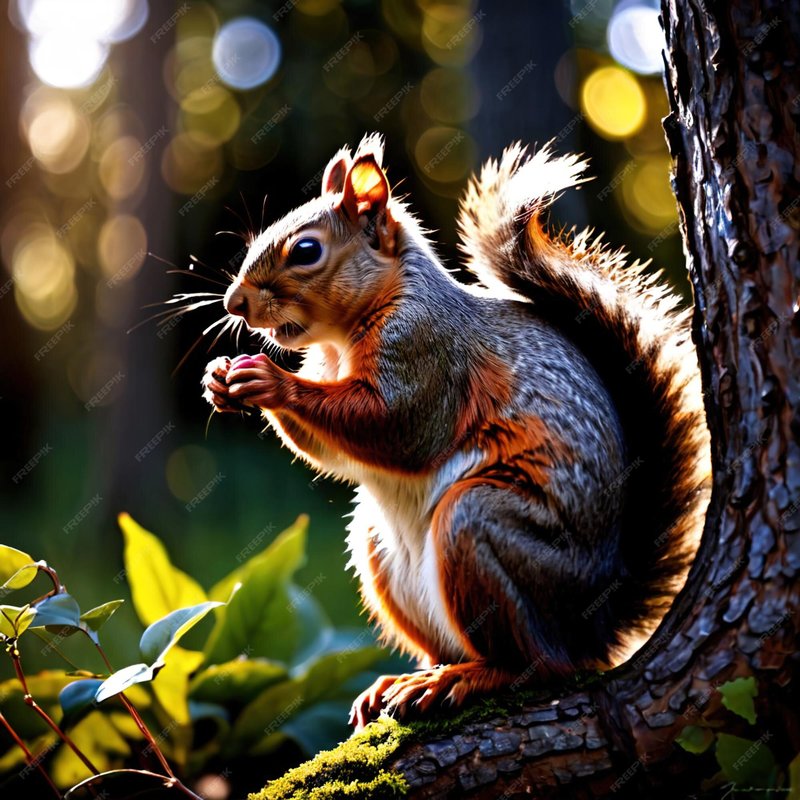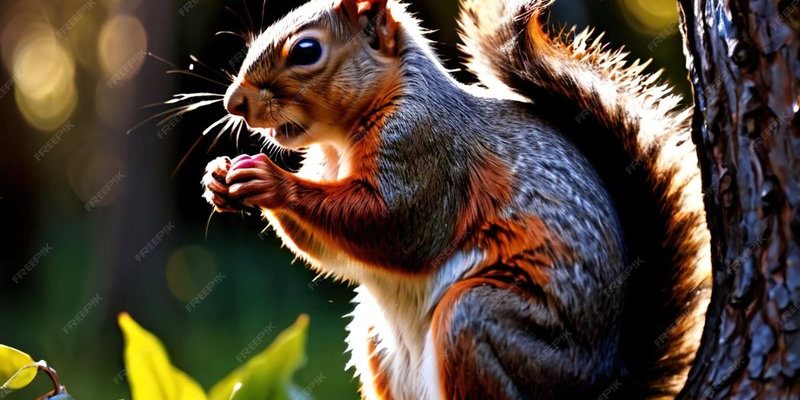
Tree squirrels are not just here for our amusement; they can be vital players in their habitats. They help in seed dispersal, which allows forests to grow and thrive. Imagine a bakery: without bakers, you’d have no bread! Similarly, without tree squirrels, many trees wouldn’t be able to spread their seeds effectively. This article will look at several aspects of the tree squirrel’s role in its ecosystem, from their diet to their interactions with other species.
Seed Dispersal: Nature’s Little Gardeners
When you think of tree squirrels, one of their most significant contributions is seed dispersal. They gather nuts and seeds to stash for later, but often forget where they’ve buried them. This forgetfulness can lead to the growth of new trees, much like a gardener planting seeds in the ground without even realizing it.
Squirrels prefer *acorns*, *hazelnuts*, and *pine seeds*, among others. Each time they dig into the earth to bury a seed, they’re essentially planting it. According to studies, one squirrel can bury thousands of seeds in a single season. This action encourages biodiversity as new plants grow, supporting numerous other species in the ecosystem.
Another fascinating point is that certain trees depend heavily on squirrels for their propagation. For instance, oak trees rely on squirrels to move and bury acorns. Without these little critters, the oak population might dwindle. Isn’t it interesting how one species can have such a far-reaching impact on another?
Food Chain Dynamics: Connecting Through Diet
Tree squirrels are not just seed planters; they’re also a vital food source for various predators. Birds of prey, like hawks and owls, alongside larger mammals such as foxes and coyotes, rely on squirrels for sustenance. This connection keeps predator populations healthy and helps balance animal populations in the wild.
By being part of this food chain, tree squirrels help ensure that their ecosystem remains stable. If squirrel populations were to decline significantly, it could lead to an overpopulation of certain plants and a lack of food for predators. This interconnectedness highlights how every species, no matter how small, contributes to the larger picture of an ecosystem.
Furthermore, tree squirrels face their share of challenges. Environmental changes can impact their availability of food and even their population. That’s why conservation efforts often focus on maintaining healthy habitats for these important creatures.
Nutrient Cycling: Breaking Down Organic Matter
Another way tree squirrels contribute to their ecosystems is through nutrient cycling. As squirrels eat fruits, seeds, and bark, they help break down organic matter, returning nutrients to the soil when they droppings or when they consume parts of the plants.
This process is vital for maintaining soil health. Healthy soil supports plant growth, which in turn provides food and shelter for other wildlife. Imagine a woodsy community where everything is interconnected—plants, animals, and soil—all thriving together.
Moreover, the decomposition process, which squirrels contribute to, creates habitats for other creatures. Fungi, insects, and microorganisms flourish in nutrient-rich environments, supporting a diverse array of life. It’s like a hidden web of life, with each strand connected and dependent on the other.
Tree Management: Natural Pruners
Believe it or not, tree squirrels also play a role in tree health. Their habit of gnawing on tree bark can help in regulating tree growth by removing dead or damaged branches. This method might seem harsh at first, but it allows trees to focus their energy on healthier parts, promoting overall vitality.
Moreover, when squirrels chew on bark to reach the nutritious cambium layer underneath, they unintentionally create openings that beneficial insects can use to get in and break down decaying wood. Although this might sound counterintuitive, it helps accelerate decay in some cases, which is essential for forest rejuvenation.
It’s fascinating to see how tree squirrels contribute to the balance of forest ecosystems. Sometimes, what may look like a negative action can actually be beneficial in the grand scheme of things. When trees are healthier, they can better support other wildlife, creating a thriving habitat for everyone.
Interaction with Other Species: A Quirky Community
Tree squirrels are social creatures, and their interactions with other animals can greatly affect the ecosystem. For instance, they often share their food resources with birds. It’s not uncommon to see squirrels and blue jays scuffling over the same acorn! Such interactions can foster relationships that benefit multiple species, as squirrels often help in seed dispersal while birds help keep the seed stock diverse.
Additionally, tree squirrels can indirectly assist in pollination. When they move through trees and bushes, they can inadvertently carry pollen on their fur from one plant to another. Imagine them as tiny, furry messengers, helping plants reproduce while searching for their next snack!
This unique community dynamic adds layers of complexity to an ecosystem. You might be wondering how each species affects one another, and it all boils down to these interactions. The more diverse the interactions, the more resilient the ecosystem.
Human Impact on Squirrel Populations
The relationship between tree squirrels and humans can be quite complicated. On one hand, we appreciate their charm and playfulness, often feeding them in parks or watching them from our windows. On the other hand, urbanization and habitat destruction threaten their populations and the vital roles they play in the ecosystem.
As cities expand, squirrels lose their natural habitats, which can lead to declining food sources and increased conflict with humans. Here’s the thing: when we encroach on wildlife territory, we disrupt established ecosystems, which can ripple through the food chain and affect various plant and animal populations.
However, there are ways we can help. Creating squirrel-friendly green spaces, planting native trees, and reducing pesticide usage can make a significant difference. Each small step can help nurture tree squirrel populations and, by extension, the ecosystems they support.
In summary, our little friends, the tree squirrels, are more than just cute animals; they’re essential players in the ecosystem. They contribute to seed dispersal, maintain food chain dynamics, support nutrient cycling, manage tree health, and engage with other species. Understanding their role allows us to appreciate the intricate connections within nature and the importance of safeguarding these creatures for our ecosystem’s health.
In the end, it’s a beautiful dance of nature, and every step counts—especially that of the humble tree squirrel.

